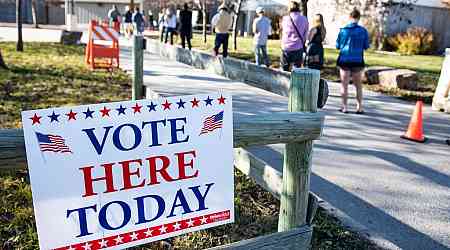
HELENA, Mont. — Voters will get to decide in November whether they want to protect the right to an abortion in the constitution of Montana, which on Tuesday became the eighth state to put the issue before the electorate this fall.
The Montana Secretary of State’s Office certified that the general election ballot will include the initiative on abortion rights. All but one of the eight states are seeking to amend their constitutions.
[time-brightcove not-tgx=”true”]Montana’s measure seeks to enshrine a 1999 Montana Supreme Court ruling that said the constitutional right to privacy protects the right to a pre-viability abortion by a provider of the patient’s choice as Republican lawmakers have tried to overturn the ruling, especially after the U.S. Supreme Court overturned Roe v. Wade in 2022 and left the abortion issue up to the states.
Read More: How Ronald Reagan Helped Abortion Take Over the Republican Agenda
“Since Roe was overturned, extreme anti-abortion politicians have used every trick in the book to take away our freedoms and ban abortion completely,” Martha Fuller, president and CEO of Planned Parenthood of Montana, said in a statement. “During that time, we have been working together to put this issue before voters.”
Republican lawmakers in Montana passed a law in 2023 saying the right to privacy does not protect the right to an abortion. It has yet to be challenged in court.
Opponents of the initiative made several efforts to try to keep it off the ballot, and supporters took several of the issues to court.
Read More: The Abortion Fight Isn’t a ‘War on Women.’ It’s a War on Poor Women
Republican Attorney General Austin Knudsen initially determined that the proposed ballot measure was legally insufficient. After the Montana Supreme Court overruled him, Knudsen rewrote the ballot language to say the proposed amendment would “allow post-viability abortions up to birth,” eliminate “the State’s compelling interest in preserving prenatal life” and potentially “increase the number of taxpayer-funded abortions.”
The high court ended up writing its own initiative language for the petitions used to gather signatures, and signature-gatherers reported that some people tried to intimidate voters into not signing.
The Secretary of State’s Office also changed the rules to say the signatures of inactive voters would not count, reversing nearly 30 years of precedent. The office made computer changes to reject inactive voters’ signatures after they had already been collected and after counties began verifying some of them.
Read More: A Guide to Kamala Harris’ Views on Abortion, the Economy, and More
Read More: What Trump’s Abortion Comments to TIME Reveal About His Plans For a Second Term
Supporters again had to go to court and received an order, and additional time, for counties to verify the signatures of inactive voters. Inactive voters are people who filled out a universal change-of-address form but did not update their address on their voter registration. If counties sent two pieces of mail to that address without a response, voters are put on an inactive list.
Supporters ended up with more than 81,000 signatures, about 10.5% of registered voters. The campaign needed just over 60,000 signatures and to qualify 40 or more of the 100 state House districts by gathering the signatures of at least 10% of the number of people who voted for governor in 2020 in that district. The initiative qualified in 59 districts.
Republican lawmakers have made several attempts to challenge the state Supreme Court’s 1999 ruling, including asking the state Supreme Court to overturn it. The Republican controlled Legislature also passed several bills in 2021 and 2023 to restrict abortion access, including the one saying the constitutional right to privacy does not protect abortion rights.
Read More: Swing States Overwhelmingly Back Abortion Rights, New Poll Finds
Courts have blocked several of the laws, such as an abortion ban past 20 weeks of gestation, a ban on prescription of medication abortions via telehealth services, a 24-hour waiting period for medication abortions and an ultrasound requirement—all citing the Montana Supreme Court’s 1999 ruling.
Last week the state Supreme Court ruled that minors in Montana don’t need parental permission to receive an abortion, overturning a 2013 law.
Seven states have already put abortion questions before voters since Roe was overturned—California, Kansas, Kentucky, Michigan, Montana, Ohio, and Vermont—and in each case abortion supporters won.
In 2022, Montana voters rejected a referendum that would have established criminal charges for health care providers who do not take “all medically appropriate and reasonable actions to preserve the life” of an infant born alive, including after an attempted abortion. Health care professionals and other opponents argued that it could have robbed parents of precious time with infants born with incurable medical issues if doctors are forced to attempt treatment.

























